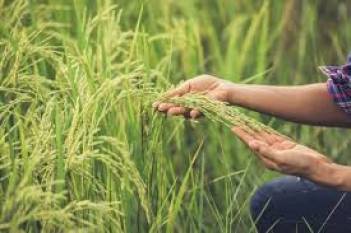PUNE, 9 April 2025: Maharashtra, a prominent agrarian state in India, is renowned for its diverse and rich rice varieties that cater to both local culinary traditions and broader market demands.
The state's varied climatic zones and fertile soils have fostered the cultivation of numerous rice cultivars, each with distinct characteristics and historical significance. Here’s an exploration of the top 10 rice varieties that define Maharashtra's rice heritage.
1. Indrayani
Indrayani is a high-yielding variety preferred by many paddy cultivators in Maharashtra's Sangli district. It has a yield potential of 7 tonnes per hectare and is suitable for irrigated areas. Known for its good quality and market demand, Indrayani has become a staple in the region.
2. Ajara Ghansal
Ajara Ghansal is an aromatic, non-Basmati rice variety primarily cultivated in Ajara taluka of Kolhapur district. Characterized by its short, bold grains and creamy white appearance, it is renowned for its distinct aroma and taste. In 2016, it received the Geographical Indication (GI) tag, underscoring its unique regional identity.
3. Ambemohar
Ambemohar, translating to 'mango blossom' in Marathi, is a traditional rice variety known for its delicate fragrance reminiscent of mango blossoms. Predominantly grown in the Western Ghats' foothills, it is favored for dishes like 'Bhakri' and festive preparations due to its soft texture and quick cooking time.
4. Kolum
Kolum rice is a popular medium-grain variety cultivated extensively in Maharashtra. Valued for its subtle flavor and soft texture, it serves as a daily staple in many households and is often preferred for making dishes like 'Pulao' and 'Khichdi'.
5. Wada Kolam
Wada Kolam, a medium-grain rice from Maharashtra, is known for its fluffy texture and mild flavor. It pairs well with various curries and is a popular choice for everyday meals.
6. Jaya
Jaya is a semi-dwarf rice variety with a 130-day duration and an impressive yield potential of up to 5 tonnes per hectare. Released during the Green Revolution, it played a pivotal role in transforming India into a self-sufficient rice producer.
7. Ratnagiri-1
Ratnagiri-1 is one of the varieties notified for cultivation in Maharashtra. It is part of the efforts to develop region-specific cultivars that cater to local agricultural conditions and market preferences.
8. Karjat-2
Karjat-2 is another notified variety for Maharashtra, developed to suit the state's specific agro-climatic conditions. It is known for its adaptability and yield potential, contributing to the state's rice production.
9. Pusa Basmati 1509
Pusa Basmati 1509 is an early maturing, reduced height, non-lodging, and non-shattering variety. With an average seed yield of 41.4 quintals per hectare, it matures in 115 days, which is 30 days earlier than Pusa Basmati 1121. Its early maturity saves 3-4 irrigations and provides ample time for wheat field preparation, reducing residue burning.
10. Madhura
Developed by innovative farmer Mavanji Pawar from Jawhar, Palghar District, Madhura is a long and slender, white-colored upland rice variety. It matures in 110-115 days, is water-stress tolerant, and has a grain yield of 17-20 quintals per acre. Recognized and registered under the Protection of Plant Varieties and Farmer’s Rights Authority (PPV &FRA), it exemplifies farmer-led innovation in rice breeding.
Maharashtra's rice varieties reflect the state's rich agricultural heritage and the adaptability of its farming communities. From traditional aromatic types like Ajara Ghansal to high-yielding modern cultivars like Indrayani, these varieties cater to diverse culinary preferences and agricultural needs. The recognition of certain varieties with GI tags and the development of new cultivars by local farmers highlight the dynamic nature of rice cultivation in the state. As Maharashtra continues to innovate and preserve its rice diversity, these varieties remain integral to its cultural and economic fabric.
Image credit: 'Indrayani Rice - Maval"




















